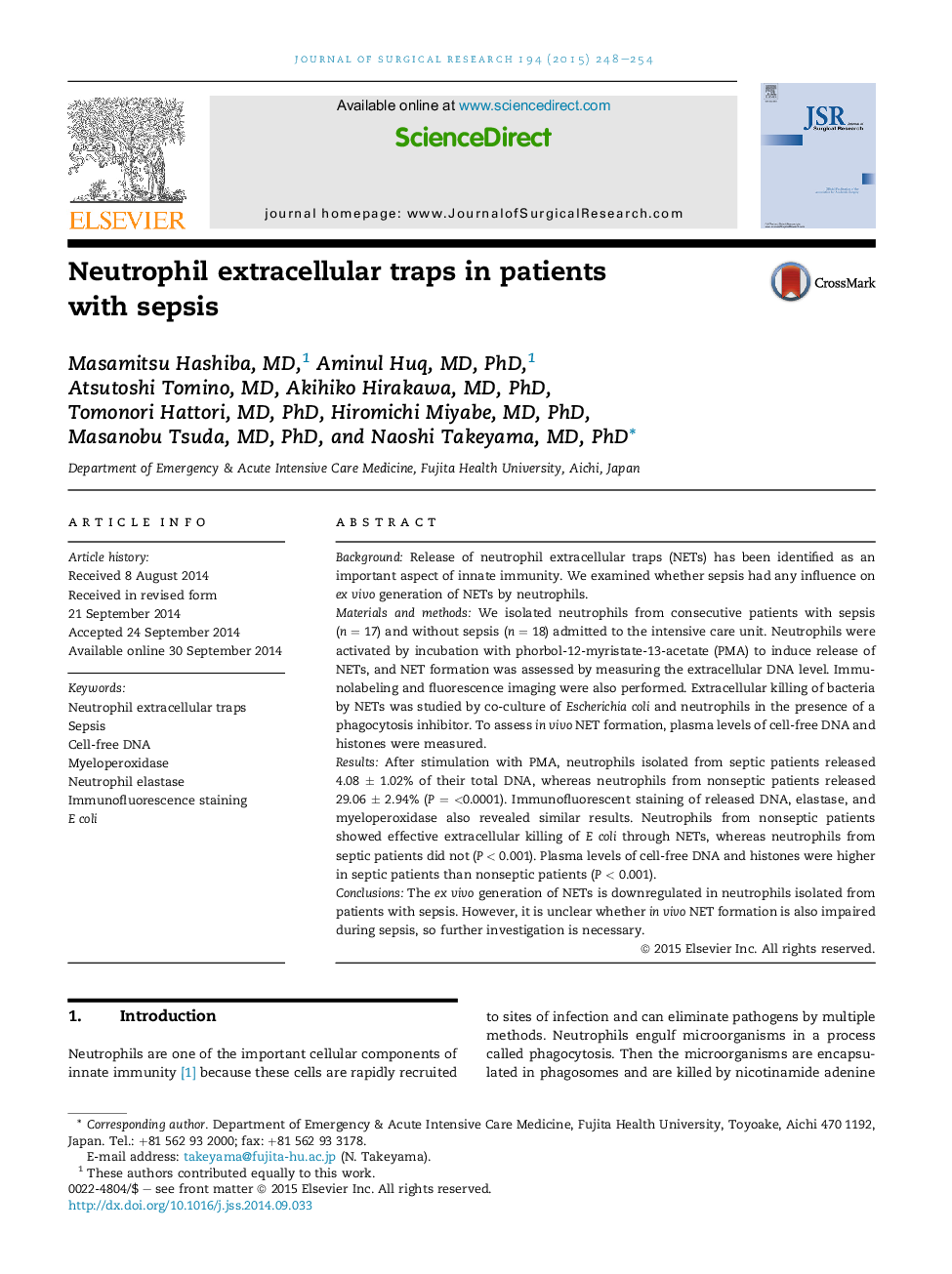| Article ID | Journal | Published Year | Pages | File Type |
|---|---|---|---|---|
| 4299850 | Journal of Surgical Research | 2015 | 7 Pages |
BackgroundRelease of neutrophil extracellular traps (NETs) has been identified as an important aspect of innate immunity. We examined whether sepsis had any influence on ex vivo generation of NETs by neutrophils.Materials and methodsWe isolated neutrophils from consecutive patients with sepsis (n = 17) and without sepsis (n = 18) admitted to the intensive care unit. Neutrophils were activated by incubation with phorbol-12-myristate-13-acetate (PMA) to induce release of NETs, and NET formation was assessed by measuring the extracellular DNA level. Immunolabeling and fluorescence imaging were also performed. Extracellular killing of bacteria by NETs was studied by co-culture of Escherichia coli and neutrophils in the presence of a phagocytosis inhibitor. To assess in vivo NET formation, plasma levels of cell-free DNA and histones were measured.ResultsAfter stimulation with PMA, neutrophils isolated from septic patients released 4.08 ± 1.02% of their total DNA, whereas neutrophils from nonseptic patients released 29.06 ± 2.94% (P = <0.0001). Immunofluorescent staining of released DNA, elastase, and myeloperoxidase also revealed similar results. Neutrophils from nonseptic patients showed effective extracellular killing of E coli through NETs, whereas neutrophils from septic patients did not (P < 0.001). Plasma levels of cell-free DNA and histones were higher in septic patients than nonseptic patients (P < 0.001).ConclusionsThe ex vivo generation of NETs is downregulated in neutrophils isolated from patients with sepsis. However, it is unclear whether in vivo NET formation is also impaired during sepsis, so further investigation is necessary.
